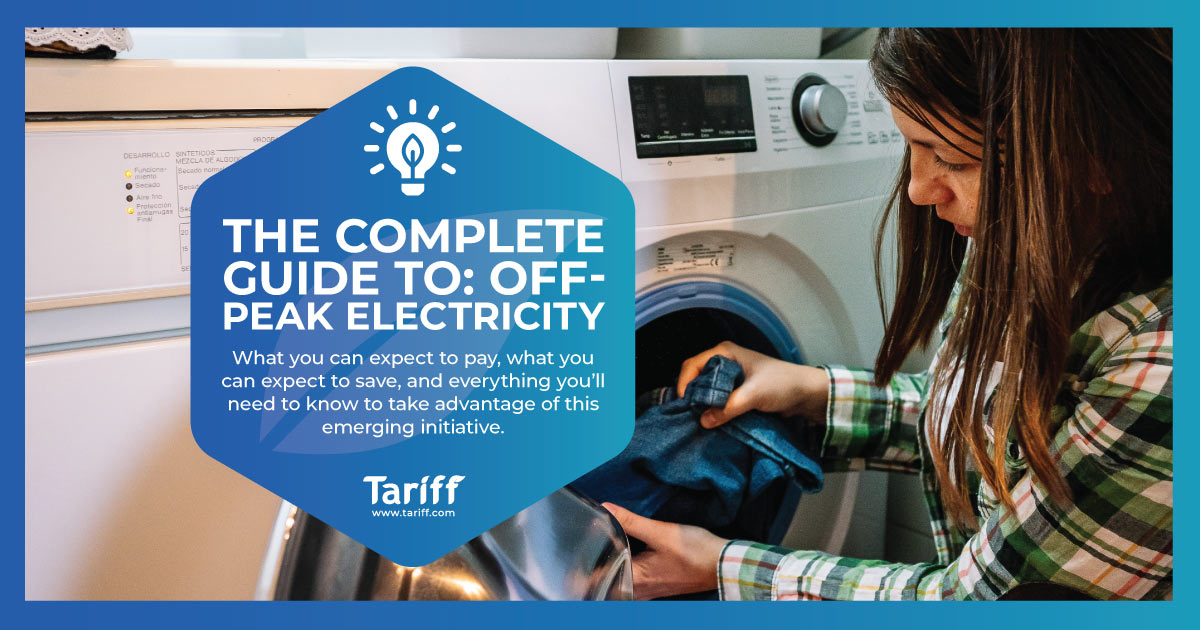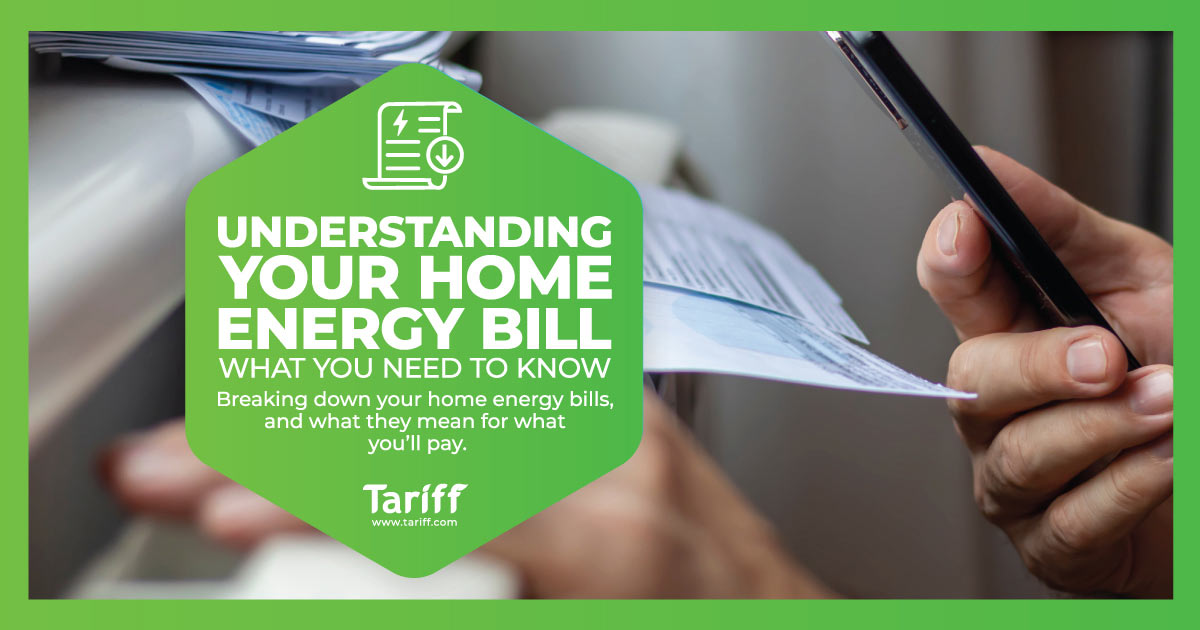The Complete Guide To: Off-Peak Electricity
If you’re in the market for a new energy supplier, or you’ve been keeping up with the latest developments across the energy sector, the chances are you’ll have heard of off-peak electricity. Formerly a term reserved for cheaper public transport travel, the initiative launched to roaring success a few years ago.
But while it can be a huge boon for those who use the bulk of their electricity overnight or during unsociable hours, it’s still so often shrouded in mystery for the average consumer. That’s where Tariff’s extensive expertise comes to the fore, and with our latest guide, we’ll be demystifying on- and off-peak electricity.
We’ll delve into what you can expect to pay, what you can expect to save, and everything you’ll need to know to take advantage of this emerging initiative. We’ll also explore how you can harness that power for your business’ energy as well as your home.
What Is Off-Peak Electricity?
Off-peak electricity is the power you use during times when the electricity grid is under less demand, such as overnight or during holiday periods.
A relatively recent innovation, off-peak electricity refers to any time when the National Grid (the UK’s energy delivery network) is under less strain. This usually means the times when less energy is being used in your average home, such as during the night, during weekend days, or when people are more likely to be on holiday.
Many of us will already be familiar with the idea of off-peak savings thanks to public transport, which usually results in cheaper train or bus fares for journeys that are less likely to be at capacity. Off-peak electricity tariffs work in a similar way, offering cheaper rates to customers who use their power when the grid is under less strain.
Also called a time-of-use (or ToU) tariff, the one catch to off-peak electricity is that you’ll need to be on a specific tariff or meter to be able to access it. These are usually called an “Economy” tariff, followed by a number (most commonly Economy 7 or Economy 10, but other companies might have specific names that relate to their branding).
These will give you two separate meter readings – one for the energy you use at the lower overnight tariff, and one for the energy you use during the day which is charged at a higher rate. This is designed to help customers differentiate between the two and allocate the right price for their energy bills.
Not all suppliers will offer these, and we’d advise checking with your chosen provider (or with your energy switching service) to ensure that you’re able to take advantage of cheaper off-peak energy. However, most mainstream suppliers (including Octopus, British Gas and E-on) do offer some form of Economy or “savings” tariff.
Which Times Offer The Cheapest Electricity?
The cheapest times are usually in the very late evening into the early hours of the morning, such as between midnight and 7 am.
This can vary between providers, and will often depend upon a range of different factors such as:
- The tariffs your energy provider offers
- Their capacity to provide energy (smaller, independent energy companies may not be able to offer off-peak discounts)
- Current wholesale energy prices and geopolitical factors (like war or trade deals)
- The current energy price cap and its impact on bills
However, as a general rule, an Economy 7 tariff will offer cheaper prices for electricity between the hours of around 11 pm/midnight and 5 to 6 am. This is completely dependent on your supplier, however – British Gas, for instance, have their cheaper electricity rates for Economy 7 customers between midnight and 8 am.
Other suppliers generally stick between those hours, but can adjust it slightly based on data from their existing customers. For instance, if an energy provider finds that the majority of their customers only start using electricity at 8:30 am, they might opt to extend their off-peak electricity window. Similarly, they might choose to shrink it down if demand rises at 6:30 am.
While we can give a good estimate of when the cheapest times for electricity will usually be, it’s ultimately down to the individual energy providers to set their timeframes.
Can I Save Money With An Off-Peak Electricity Tariff?
Customers who use more than a third of their energy overnight can see a modest saving when using an off-peak tariff.
This is entirely dependent on your circumstances. A dedicated energy switching service will be able to determine how well this can work for you, but we’ll also outline a few key things to consider here, especially if you’ve already got an Economy 7 (or similar) tariff, or you’re planning to have one installed.
We’ve posed these as simple questions you can ask yourself, almost like a self-assessment to determine if an off-peak electricity tariff is the right choice for you. We’ve used figures from the Energy Saving Trust to better quantify how much you could save.
When Do You Do Your Washing?
According to the Energy Saving Trust, washing machines are responsible for around 14% of all the energy our households use. Of course, more energy-efficient appliances may use less, but for the most part, these will be the biggest power sinks in your property.
If you wash overnight, or you’ve got your machine set on a timer to start a cycle in the early hours of the morning, an off-peak package could be right for you.
Do You Own An Electric Vehicle?
If you’re one of the estimated 1.36 million UK residents who’ve made the jump to an electric car, you’ll naturally need to charge it. The best time to do this is overnight (especially given you’re less likely to need it during the evening), and an off-peak tariff can help here too.
Many suppliers have already recognised this, and offer specific tariffs targeted at allowing for cheaper vehicle charging, but an off-peak tariff can still help here.
Is Your Home A Haven For Night Owls?
If you’ve got a house of young adults, the chances are you’ll have heard a games console, television or computer running long into the night. These use a substantial amount of energy, accounting for around 6% of your average energy bill.
Opting for an economy or off-peak energy tariff here can help, particularly if computers or games consoles are active in the early hours.
Do You Leave Lights On Overnight?
If you have children who need a light on to sleep – even just a hallway light or nightlight – then an off-peak tariff could help you see some marginal savings. Lights don’t use as much power as we’d expect, taking up around 5% of our yearly bill, but even smaller savings can and do add up to major positive changes to your energy usage.
With those in mind, we’d also recommend investing in a smart meter. This not only allows you to better keep track of the energy you’re using but also to fully ensure that you’re getting the most out of your off-peak electricity. A self-audit like the one we’ve laid out above can really help with that, but a smart meter will allow you to better quantify the benefits.
Modern smart meters do work with Economy 7 or similar meters, and you’ll be able to ask your provider to switch over. Octopus, for example, allow customers to migrate seamlessly between the two meters, and still track their usage.
We’d also recommend considering your future circumstances, too. For instance, if you’re planning to downsize your property in the near future, or you’ve got people moving in or out, you’ll need to consider how that could affect your energy consumption.
Can Businesses Get Off-Peak Electricity?
Yes, but this is usually referred to as a Time of Use (ToU) Tariff.
While it’s easy to assume that off-peak electricity is reserved for homes, it’s equally true that businesses can take advantage. Companies can still get the same or similar Economy 7 or Economy 10 tariffs available to domestic customers, but choosing whether it’s right for you can be a difficult decision.
There are options available, though. If you’re a business that’s likely to be more active in the evenings or overnight (such as a nightclub or takeaway restaurant) or that can take advantage of cheaper prices while closed (such as a dry cleaners or catering company), this can work for you.
Similarly, there are initiatives like Octopus’ Shape Shifters scheme, which offers larger periods of cheaper energy for very small or micro businesses. This is only viable for a small subset of companies, though, and finding what works for you can be a challenge, especially if you’re aiming to do that alongside your day-to-day business operations.
That’s where a dedicated switching service like Tariff comes in. Our eco-credentials speak for themselves, but we’re all about sharing that expertise with businesses across a wide range of sectors. We’re fully committed to helping you save on your bills, while still retaining that core sense of environmentalism that drives some of our core objectives.
With our dedicated switching team, you’re in the safest possible hands. We can migrate you over to a more economically viable or cheaper tariff in a seamless, interruption-free process that only requires minimal input from you – we’ll handle all the rest.
It’s something we’ve got substantial experience with, and even as the energy market evolves, Tariff’s team are always one step ahead. Get in touch today to discuss your options in much more detail and to receive a free, no-obligation quotation that can bring your bills down.




